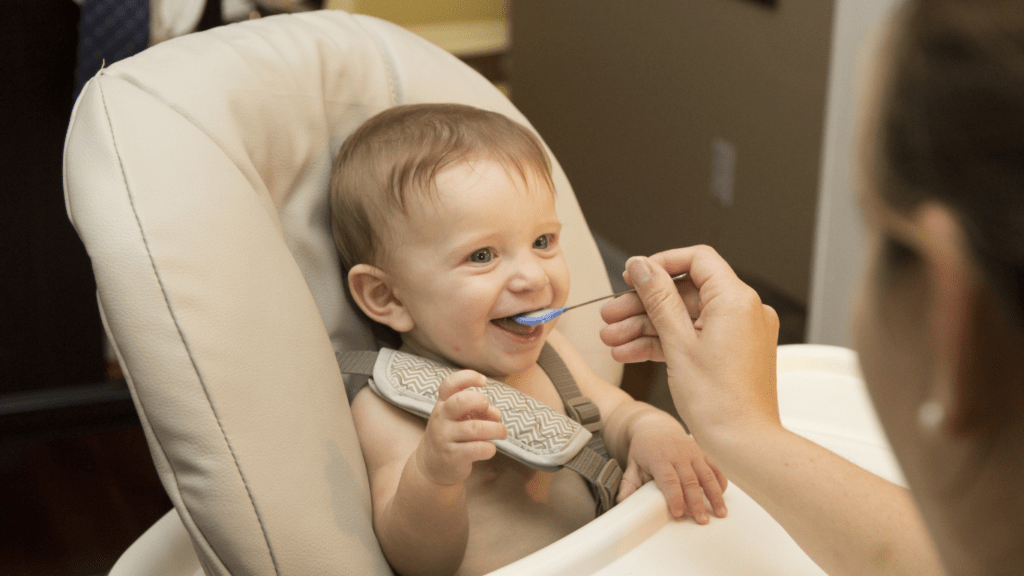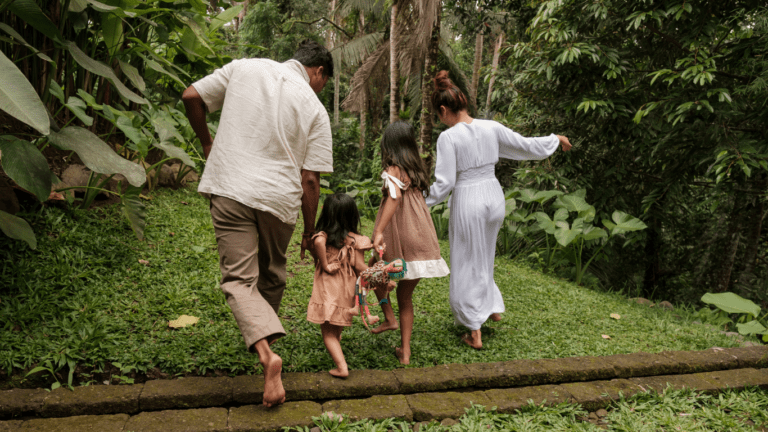Understanding the Importance of Bonding
Bonding with your baby from day one is crucial for their emotional and physical development. Studies show that babies who form secure attachments with their parents tend to have higher self-esteem and better stress management skills later in life (source: American Academy of Pediatrics). Early bonding also promotes brain development, as positive interactions stimulate neural connections.
The first few weeks are vital for establishing this bond. Your actions, no matter how small, such as holding or talking to your baby, help build trust and security. A strong bond can foster social and cognitive skills essential for future learning. When babies feel loved and secure, they explore more and learn more effectively.
Touch is a fundamental part of bonding. Skin-to-skin contact immediately after birth can stabilize a baby’s heart rate and breathing. It also triggers the release of oxytocin, often referred to as the “love hormone,” which enhances emotional connection and reduces stress for both parent and child. Daily activities, including feeding and bathing, offer perfect opportunities for touch.
Eye contact is another powerful bonding tool. When you gaze into your baby’s eyes, you create a moment of connection that can boost emotional ties. Babies can focus on faces from about 8-12 inches away, the typical distance when being held. Smiling and talking softly during these interactions reinforce this connection.
Lastly, soothing sounds and singing can significantly impact bonding. Babies recognize their parents’ voices and find comfort in familiar sounds. Gentle singing and talking can calm a baby, making them feel safe. These moments also encourage language development by exposing the baby to rhythmic and melodic speech patterns.
Understanding the importance of bonding allows parents to take intentional steps to connect with their baby from the very beginning, laying a strong foundation for the child’s emotional and cognitive growth.
Skin-to-Skin Contact
Skin-to-skin contact is crucial for building a deep, early connection with your baby. This simple act involves placing the baby directly against your bare chest.
Benefits of Skin-to-Skin
Skin-to-skin contact offers numerous benefits for both baby and parent. It helps regulate the baby’s body temperature and heart rate. This natural stabilization can reduce the risk of hypothermia and improve overall health. Babies often cry less and sleep more soundly when in close physical contact.
Oxytocin release is another significant benefit. This hormone, known as the “love hormone,” promotes bonding and reduces stress. Increased oxytocin levels also support milk production for breastfeeding mothers. Research from the World Health Organization highlights that babies held skin-to-skin immediately after birth breastfeed more successfully.
Techniques for Effective Skin-to-Skin
To practice skin-to-skin contact effectively, follow these steps. First, undress your baby down to the diaper. Place the baby directly on your bare chest. Use a soft blanket to cover both of you to maintain warmth.
Ensure a comfortable position for both you and the baby. Most parents find a semi-reclined position ideal. Spend at least an hour in this position, especially during the baby’s first few days. This timeframe allows the baby to fully relax and benefit from the contact.
For continued bonding, incorporate skin-to-skin sessions into daily routines. Include moments after feedings, during nap times, or just before bedtime. Both mothers and fathers can participate in skin-to-skin contact, ensuring the baby feels close to both parents. These moments provide comfort, security, and a strong emotional connection that supports the baby’s development.
Communication and Eye Contact
Connecting with a newborn through communication and eye contact plays a crucial role in developing a strong bond. These simple actions lay the foundation for a secure attachment, nurturing the baby’s emotional and cognitive growth.
Talking and Singing to Your Baby
I can engage my baby by talking regularly, which helps them recognize my voice and fosters a sense of security. From birth, a baby can discern different sounds and tones. When I talk or sing, using a calm and soothing voice, it’s reassuring for the baby. Singing lullabies or simple songs stimulates their auditory senses and supports early language development. Narrating daily activities, even mundane ones, engages the baby and exposes them to a variety of sounds and rhythms, which is essential for their language acquisition.
The Power of Eye Contact
Eye contact is a powerful way to bond with my baby. When I lock eyes with them, it creates a moment of mutual recognition and connection. Babies are naturally drawn to faces and can focus on mine from a short distance. During feeding times, diaper changes, or playtime, maintaining eye contact helps establish trust and emotional security. It encourages the release of oxytocin, enhancing the bond between us. By frequently engaging in eye contact, I can communicate love and attention, essential elements for the baby’s overall development.
Feeding as a Bonding Activity

Feeding offers an ideal opportunity to strengthen the bond with your baby. Whether breastfeeding or bottle-feeding, each moment spent nurturing helps build trust and emotional connection.
Breastfeeding Bonding Moments
Breastfeeding provides a unique bonding experience due to the direct physical and emotional closeness it promotes. Here’s how to make the most of breastfeeding sessions to enhance your bond:
- Skin-to-Skin Contact: Holding your baby close during breastfeeding increases the production of oxytocin, fostering both emotional connection and milk flow. Ensure that the baby’s skin directly touches your chest.
- Eye Contact: Maintain eye contact while nursing to reinforce the emotional bond and facilitate mutual recognition. Your baby will feel more secure and loved seeing your reassuring gaze.
- Comfort and Calm: Choose a quiet, comfortable space for breastfeeding. Minimizing distractions ensures both you and your baby can focus on each other, enhancing the bonding experience.
- Responsive Feeding: Recognize and respond promptly to your baby’s hunger cues. Feeding on demand strengthens trust and reinforces the idea that their needs will be met, fostering a secure attachment.
Bottle-Feeding Bonding Tips
Bottle-feeding can be just as intimate and connecting as breastfeeding when approached thoughtfully. Apply these tips to maximize the bonding potential during bottle-feeding:
- Hold Your Baby Close: Cradle your baby in your arms, ensuring they feel safe and snug. The physical closeness mimics the comfort of breastfeeding and promotes emotional bonding.
- Eye Contact: Just like in breastfeeding, maintain eye contact to help build a strong emotional connection. Your baby will relish looking into your eyes, feeling your presence and love.
- Responsive Feeding: Be attentive to your baby’s signals of hunger and fullness. This responsiveness helps develop a trusting relationship, as your baby learns that you’re attuned to their needs.
- Feeding Routine: Establish a consistent feeding routine that incorporates quiet, uninterrupted time together. Regular, predictable feeding sessions create a comforting structure for your baby.
Feeding, whether by breast or bottle, represents more than nourishment—it’s a crucial time to establish a lasting bond with your baby.
Playtime and Activities
Playtime offers valuable moments to bond with your baby. Engaging in enjoyable activities fosters emotional connection, aiding their development.
Gentle Play and Interaction
Engaging gently with your baby during playtime nurtures trust and security. Simple games like peekaboo and pat-a-cake captivate their interest. Softly touching their hands and feet during play boosts sensory development. These activities stimulate their brain, fostering motor skills and emotional bonding. Allowing tummy time encourages muscle strength and coordination. Smiling and maintaining eye contact during play deepens the emotional connection.
Reading to Your Baby
Reading to your baby bolsters language development and strengthens your bond. Choose books with bright colors and simple illustrations. Reading fosters early literacy, auditory skills, and comprehension. It also helps baby recognize your voice and rhythms of speech, promoting comfort. Cuddling while reading enhances physical closeness, making the experience more intimate. Integrating reading sessions into your daily routine ensures consistent interaction.
Establishing a Routine
Creating a consistent routine strengthens the bond between parent and baby. Routine provides predictability, which helps the baby feel secure.
Bath Time Bonding
Bath time creates an excellent bonding opportunity. The warm water soothes the baby and promotes relaxation. To enhance this experience, I keep everything ready before starting. I ensure the water temperature is around 98-100°F to avoid discomfort. Using gentle, baby-specific soap and shampoo protects the baby’s delicate skin.
During the bath, I talk or sing to my baby, making eye contact to foster a deeper connection. Holding the baby securely while supporting the head and neck, I gently wash each part, focusing on their reactions. This not only cleans the baby but also provides tactile stimulation, which is crucial for development. After the bath, I wrap the baby in a soft towel, offering warmth and security, and take this time to engage in more skin-to-skin contact for added bonding.
Bedtime Rituals
Establishing bedtime rituals ensures the baby feels safe and helps them transition smoothly to sleep. I start by creating a calming environment—dimming the lights and reducing noise. Consistency is key, so our routine follows the same order each night.
A typical bedtime ritual includes a warm bath, followed by drying the baby with a gentle massage using baby lotion. This not only relaxes the baby but also strengthens our emotional connection through touch. After the massage, I dress my baby in cozy pajamas and read a short story or sing a lullaby. I always maintain eye contact and speak in a soothing tone to reinforce a sense of security.
Finally, I place the baby in the crib while they’re drowsy but awake. This encourages self-soothing and a healthy sleep pattern, which is essential for development. Throughout the bedtime ritual, the consistent presence and comforting actions help reinforce our bond, providing a foundation of trust and security.




























































































































































































































































































































































































































































 David Withers – Senior Parenting Advisor David Withers brings over 15 years of expertise in child development and family dynamics to his role as Senior Parenting Advisor at Makes Parenting Watch. A respected voice in the parenting community, David has worked extensively with families, helping them navigate the complexities of raising children through every phase of life—from infancy to adolescence. His articles are known for their evidence-based approach, offering parents practical, actionable tips on topics such as sleep training, positive discipline, developmental milestones, and fostering emotional resilience in children. In addition to his writing, David conducts workshops and webinars to provide personalized advice to parents dealing with specific challenges. His deep understanding of child psychology and development ensures that Makes Parenting Watch remains a valuable and reliable resource for parents seeking guidance in today’s fast-paced world.
David Withers – Senior Parenting Advisor David Withers brings over 15 years of expertise in child development and family dynamics to his role as Senior Parenting Advisor at Makes Parenting Watch. A respected voice in the parenting community, David has worked extensively with families, helping them navigate the complexities of raising children through every phase of life—from infancy to adolescence. His articles are known for their evidence-based approach, offering parents practical, actionable tips on topics such as sleep training, positive discipline, developmental milestones, and fostering emotional resilience in children. In addition to his writing, David conducts workshops and webinars to provide personalized advice to parents dealing with specific challenges. His deep understanding of child psychology and development ensures that Makes Parenting Watch remains a valuable and reliable resource for parents seeking guidance in today’s fast-paced world.
